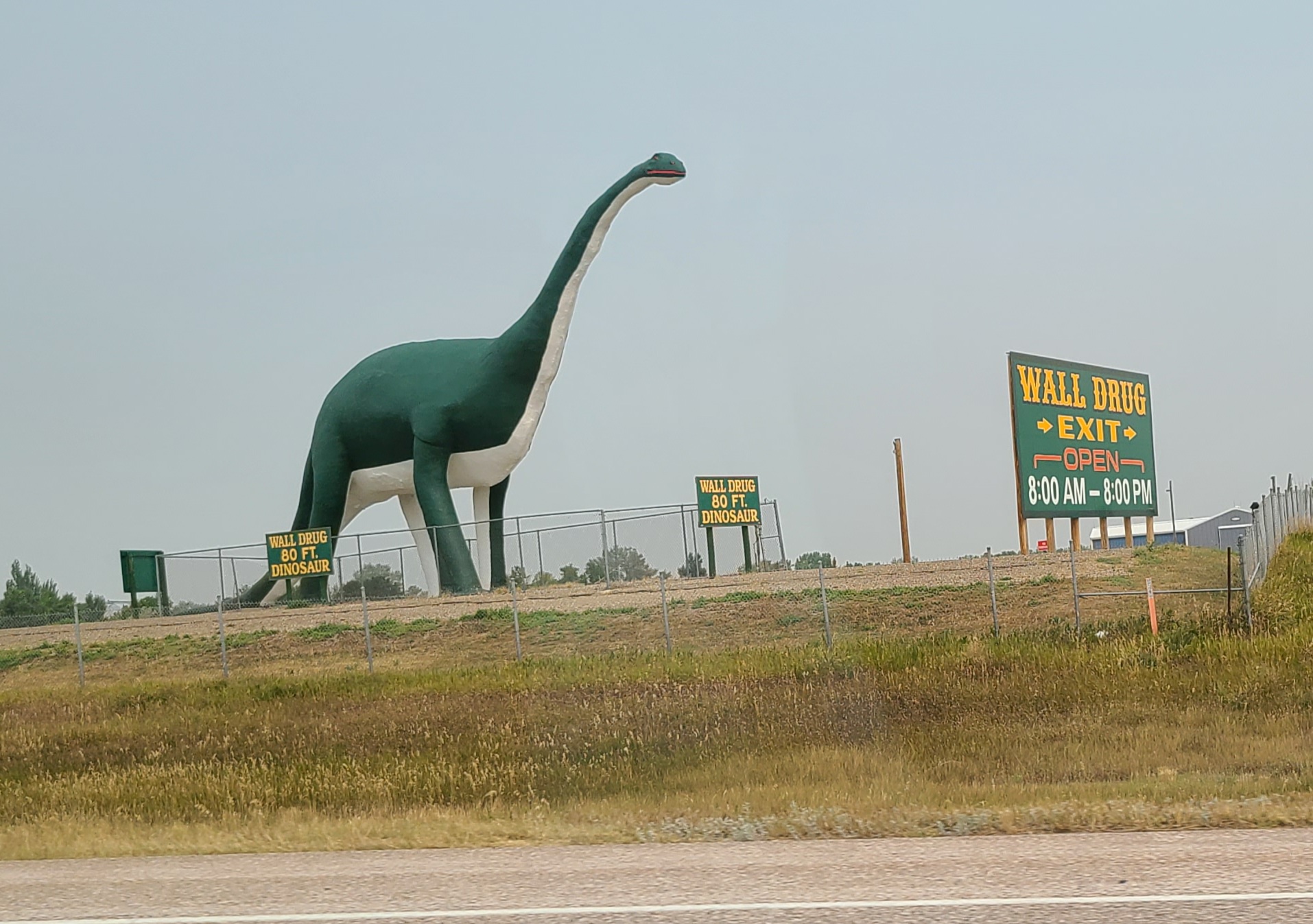Our strategy to get as close to the Mount Rushmore and Crazy Horse monuments as possible on our first travel day left us in Sioux Falls, SD, Sunday night, which was still 371 miles, or over 5 hours of driving time away.
We killed the original itinerary that would have taken us to the monuments and then into Montana and down through Yellowstone for a couple of reasons—it would have added lots more travel time and the wildfires burning in the west had closed some of the roads. The new plan had us visiting the monuments, remaining in nearby Rapid City, SD overnight and then heading straight for home the following day without the Yellowstone detour.

Getting an early start Monday, we hit the I-90 west and passed through a lot of South Dakota prairie land and some small towns as well as a Minuteman missile national historic site. Closing my eyes I could see herds of buffalo (bison) grazing peacefully, though in truth we never saw one on the whole trip, in part because due to time constraints we skipped a visit to Custer State Park, which is near the monuments.
After many miles of similar scenery, suddenly a large body of water came into view straight ahead. As we got closer we realized it was a river—in fact, we were actually crossing the mighty Missouri! I was surprised by its width and for a moment put myself back in time over 200 years to when Lewis and Clark and their Shoshone guide Sacagawea and her husband first explored this part of the Louisiana Territory.



The explorers faced all kinds of dangers. Nowadays there are only billboard pollution and bikers along the way, as Sturgis, SD, the bikers’ mecca, is just 28 miles from Rapid City. Continuing on, we were startled to see huge yellow fields, which, as we got closer we could see were sunflowers. Kansas notwithstanding, who knew that South Dakota is the sunflower capital of the U.S.?


Whether from scenery fatigue or just downright tiredness we started snapping photos of oddball billboards. See below. Mind you, there was just a split second to capture these or they were gone.













After so many miles of prairie the Black Hills suddenly appeared. Sacred to the Sioux, these granite hills, not only are home to Mount Rushmore and the Crazy Horse monuments, but also spawned a frenzy in 1874 when gold was discovered in French Creek near present-day Custer. The hills are not exactly black, but in contrast to the yellow prairie are covered with dense evergreen trees which convey that mysterious dark appearance. Bikers and other tourists are right at home in nearby Keystone.






The Mount Rushmore monuments are visible from quite a distance as we approach the national park.

What should have been crystal clear was shrouded in smoke due to the wildfires. The memorial to Presidents George Washington, Thomas Jefferson, Abraham Lincoln and Theodore Roosevelt was created between 1927 and 1941 by sculptor Gutzon Borglum and has remained an ultimate tourist destination and wonder ever since.
My phone went dead just we entered the park’s parking lot but Jim saved the day with his photos of both parks and monuments below. We ate lunch in the Mount Rushmore visitors’ center then viewed an orientation film in the park’s subterranean theater, which was later evacuated due to an unexplained emergency.


Just 8 miles down the road we entered the Crazy Horse National Memorial. Situated on a granite mountain over 6,000 feet high, work on the monument began in 1948. The site was picked by sculptor Korczyk Ziokowski and Oglala Sioux Chief Henry Standing Bear. The sculptor’s descendants are still deeply involved in the project and running the visitor’s center. We were able to view Crazy Horse at fairly close range on an optional bus tour and were pleased to learn it honors not only the Sioux, but all native people of the U.S. Blasting at the site has ceased and the builders are currently using diamond saws to shape the mountain. No one is certain when the project will be completed but when the sculpture is done, it will be the world’s largest single monument.






We had dinner nearby in the quaint old district of Rapid City in what had once been an old firehouse wishing we had more time to explore.



Then we remained in town overnight. Photos below depict some of the old Rapid City.
Next: Teapot Dome and the Cowboy State.






You must be logged in to post a comment.